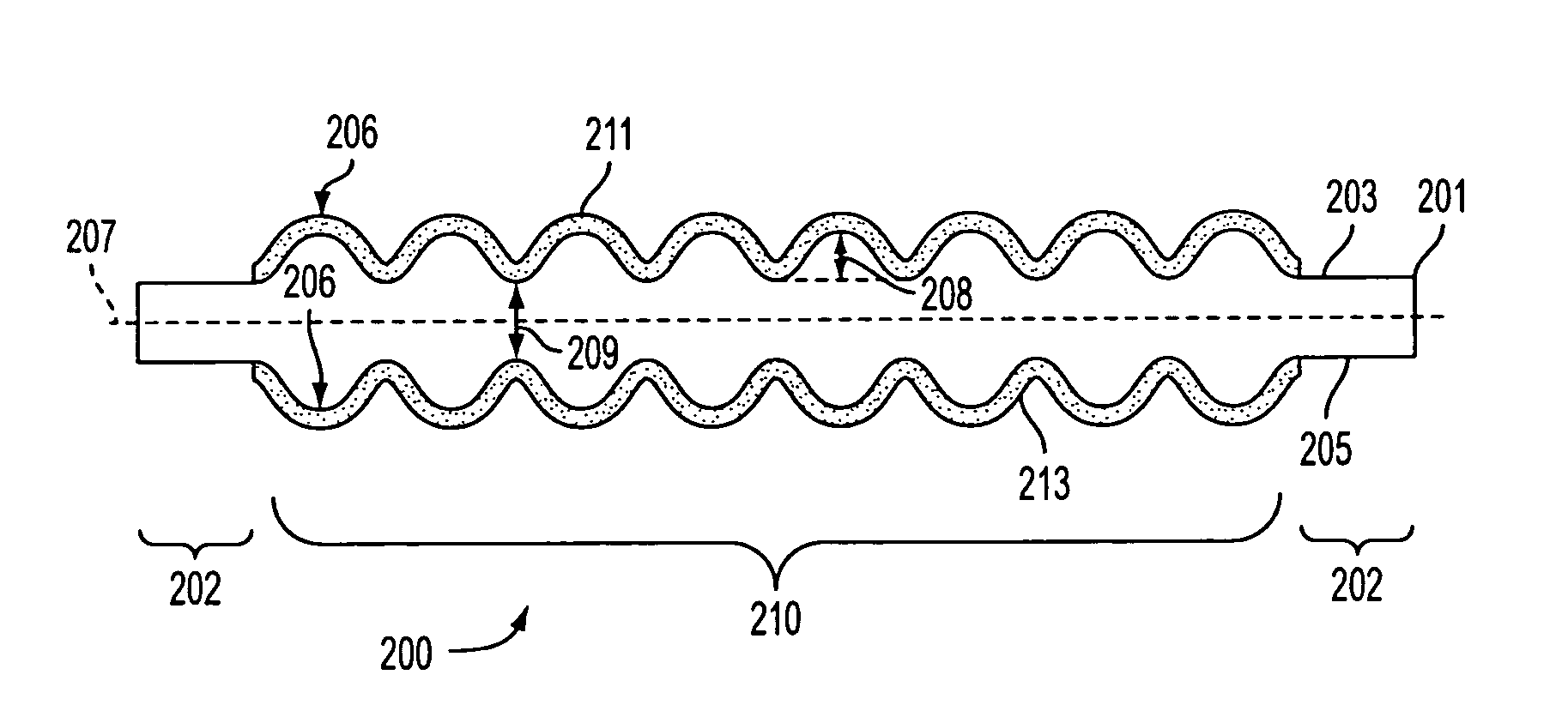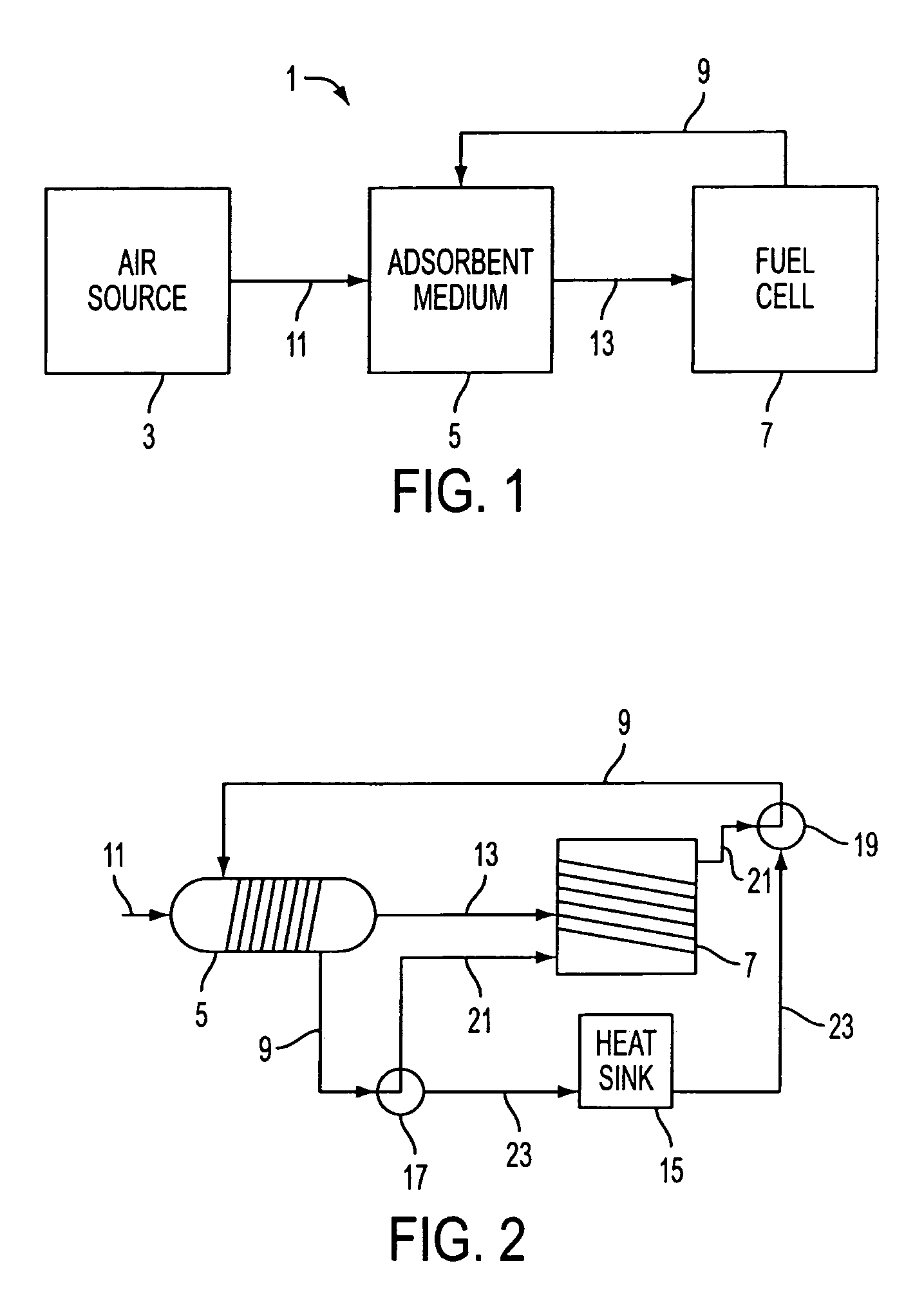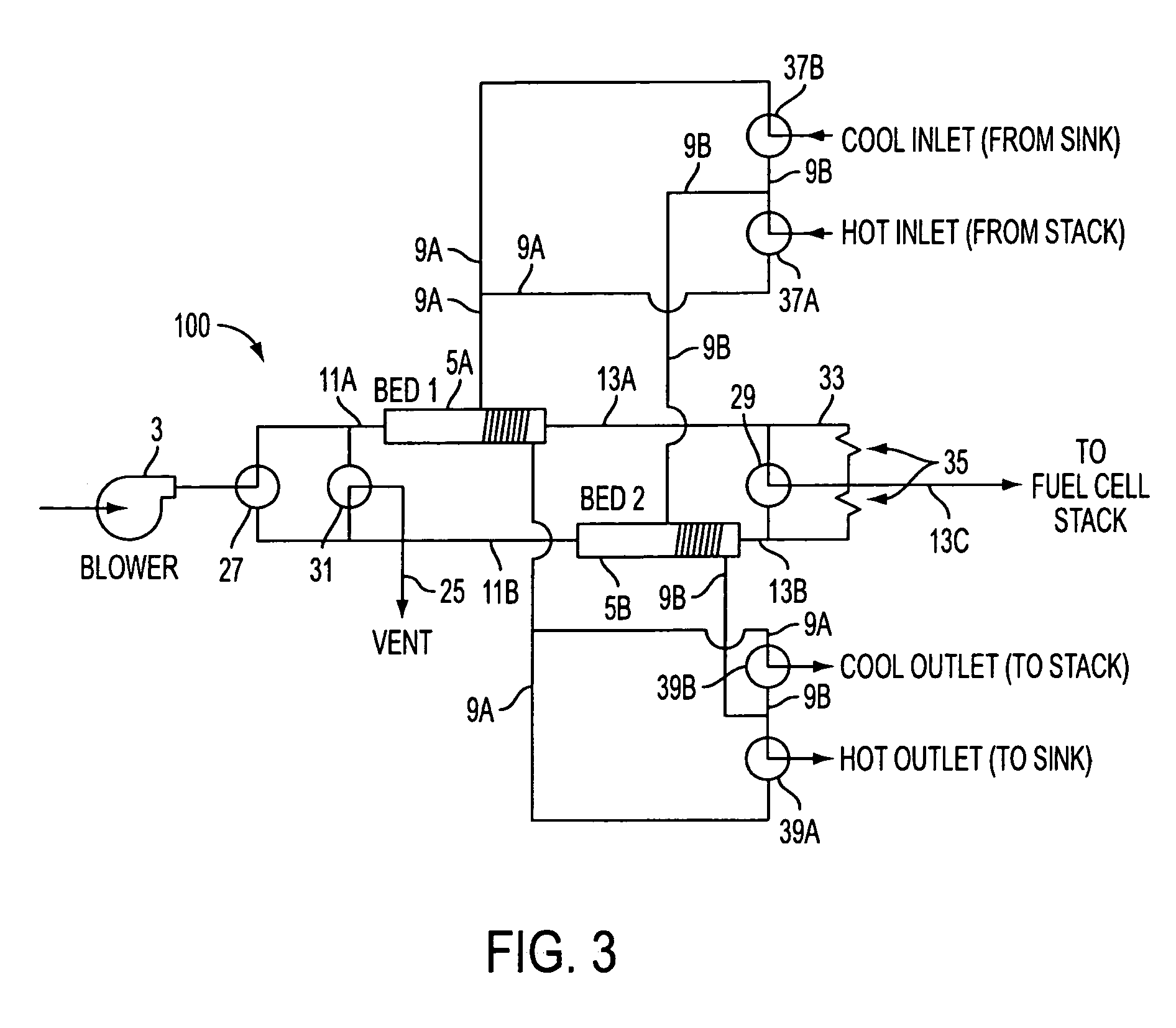Textured electrolyte for a solid oxide fuel cell
a fuel cell and electrolyte technology, applied in the field of fuel cells, can solve the problems of reducing the efficiency of the fuel cell and the power generation system
- Summary
- Abstract
- Description
- Claims
- Application Information
AI Technical Summary
Benefits of technology
Problems solved by technology
Method used
Image
Examples
first embodiment
[0021]In one preferred aspect of the first embodiment, the heat transfer conduit 9 comprises a pipe which is located adjacent to the fuel cell 7, adjacent to a heat sink 15 and adjacent to the adsorbent medium 5. For example, as shown in FIG. 2, the conduit 9 is wrapped around the housing of the adsorbent medium 5 and around the fuel cell 7. The conduit 9 also passes through the heat sink 15. The heat transfer conduit 9 transfers a heated heat transfer liquid, such as water, from adjacent to the fuel cell 7 to the adsorbent medium 5. The heated heat transfer liquid heats the adsorbent medium 5 to desorb nitrogen from the adsorbent medium 5. The heat transfer conduit 9 also transfers a cooled heat transfer liquid, such as water, from adjacent to the heat sink 15 to the adsorbent medium 5. The cooled heat transfer liquid cools the adsorbent medium 5, which allows the adsorbent medium 5 to adsorb nitrogen from air that is being provided from inlet 11.
[0022]The operation of the heat tra...
second embodiment
[0095]FIG. 8B illustrates another preferred aspect of this invention. The system illustrated in FIG. 8B shows an alternative preferred routing of the heat streams shown in FIG. 7. The system depicted in FIG. 8B is similar to the system depicted in FIG. 8A, with the exception that the oxidizer cooling heat 60 is provided to the heat exchanger 4 as the high temperature heat 10, and the burner exhaust heat 64 is provided to the oxidizer preheater 24 as oxidizer preheat 62. Thus, the oxidizer outlet conduit 46 is provided into the heat exchanger of the heat pump 4 and then into the burner 30, while the burner exhaust conduit 50 is provided into the burner exhaust heat exchanger 32. Both the heat transfer from the oxidizer cooling heat 60 to the high temperature heat 10 and the burner exhaust heat 64 to the oxidizer preheat 62 can be realized with heat exchangers. Thus, the oxidizer preheater 24 and the burner exhaust heat exchanger 32 are combined as a single component and comprise port...
third embodiment
[0121]FIG. 13 illustrates a solid oxide fuel cell 200 containing a ceramic electrolyte 201 having at least one non-uniform surface portion, according to a first preferred aspect of the The at least one non-uniform surface in the first preferred aspect is a textured surface. Preferably, two opposing major surfaces 203, 205 are textured. A textured surface 203, 205 contains a plurality of protrusions (i.e., bumps, peaks, etc.) 206 having a height 208 that is 5% or less, preferably 1% or less of an average electrolyte thickness 209. In a preferred aspect of this embodiment, the electrolyte is textured to obtain an electrolyte having a surface roughness of 0.5 to 2.5 microns, preferably 1 to 2 microns. This surface roughness possesses good adhesion to common SOFC electrodes. The height and width of the protrusions 206 is exaggerated in FIG. 13 for clarity. The protrusions 206 may have any desired shape, such as rectangular, polygonal, triangular, pyramidal, semi-spherical or any irregu...
PUM
| Property | Measurement | Unit |
|---|---|---|
| roughness | aaaaa | aaaaa |
| temperatures | aaaaa | aaaaa |
| surface roughness | aaaaa | aaaaa |
Abstract
Description
Claims
Application Information
 Login to View More
Login to View More - R&D
- Intellectual Property
- Life Sciences
- Materials
- Tech Scout
- Unparalleled Data Quality
- Higher Quality Content
- 60% Fewer Hallucinations
Browse by: Latest US Patents, China's latest patents, Technical Efficacy Thesaurus, Application Domain, Technology Topic, Popular Technical Reports.
© 2025 PatSnap. All rights reserved.Legal|Privacy policy|Modern Slavery Act Transparency Statement|Sitemap|About US| Contact US: help@patsnap.com



